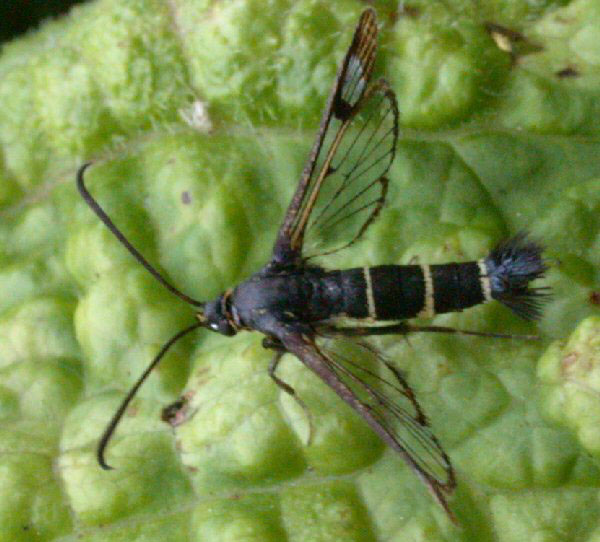Clearwing moths or Sesiidae are a family of the Lepidoptera in most species of which the wings partially have hardly any of the normal lepidopteran scales, leaving them transparent.
The bodies are generally striped with yellow, red or white, sometimes very brightly, and they have simple antennae. The general appearance is sufficiently similar to a wasp or hornet to make it likely that the moths gain a reduction in predation by Batesian mimicry.
This enables them to be active in daylight. They are commonly collected using pheromone lures. Worldwide there are 151 genera, 1370 species, and 50 subspecies. Most of these occur in the tropics, but there are many species in the Holarctic region.
The larvae of the Sesiidae typically bore in wood or burrow in plant roots. Many species are serious pests of fruit-tree or timber cultivation, or crop plants (e.g. Melittia spp. on squash) (Edwards et al., 1999).
These moths should not be confused with the Hemaris genus of the family Sphingidae, which are also known as clearwing moths in the U.S., but normally as bee hawk-moths in Britain. Hemaris moths have generally fatter, furrier bodies than sesiid clearwings, looking similar to bumble bees, and lack the striped colouration.


